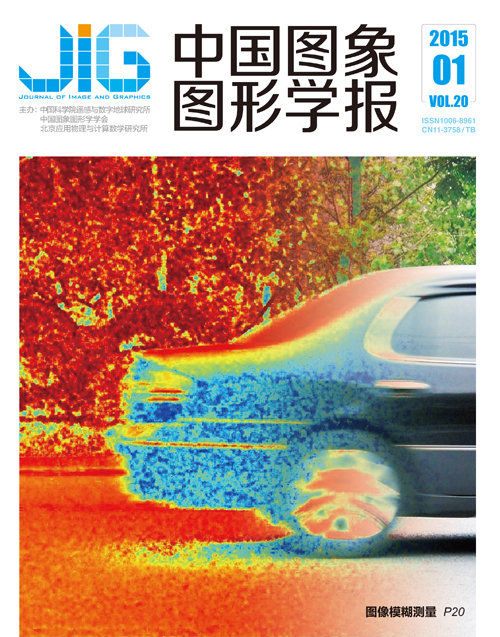
针对重复模式图像的成对特征点匹配
摘 要
目的 含有重复模式的图像会对局部特征描述符产生歧义,因此基于局部特征的匹配算法在此类图像的匹配过程中极易产生误匹配。同时,通过研究现有的引入全局特征描述符的匹配算法,发现全局特征同样依赖于计算局部信息所得到的特征点主方向,所以此类方法在含有重复模式的图像中也不容易得到令人满意的匹配效果。为了解决这一问题,提出一种基于成对特征点的图像匹配算法。方法 该方法利用成对特征点的方向向量作为特征点对的主方向,为特征描述提供了正确的方向信息,同时引入DAISY描述符与改进后的全局上下文(global context)特征描述符,提高了匹配能力。结果 分别在模拟图像与实际图像上面进行了对比匹配实验,本文算法平均的匹配正确率能达到88%以上,比其他经典的匹配算法提高了26%以上。结论 实验结果表明,本文算法克服了现有算法在特征描述与主方向分配上的缺陷,进一步提升了匹配正确率,能够有效地解决重复模式图像的匹配问题。
关键词
Pair-wise feature points based matching algorithm for repetitive patterns images
Luo Nan, Sun Quansen, Chen Qiang, Ji Zexuan, Xia Deshen(The School of Computer Science and Engineering, Nanjing University of Science and Technology, Nanjing 210094, China) Abstract
Objective In many computer vision tasks, one of the core steps is to set up reliable correspondences of points between two images. Although image matching methods based on local descriptors have been well studied, they are usually unable to find the correct corresponding points of the images containing repetitive patterns even if the viewpoint changes are very small. Due to the local information ambiguities of the images containing repetitive patterns, false matches can be easily produced by the local feature based image matching algorithms. Meanwhile, the matching algorithms combining with the global feature still depend on the main orientation which is obtained by calculating the local information. Therefore, these algorithms also usually lead to mismatching for the images with repetitive patterns. Thus, it is meaningful to cope with the challenging matching task since such repetitive patterns widely exist in the real world images of artificial objects or scenes. Method To solve this problem, a novel image matching algorithm based on pair-wise feature points is proposed in this paper. First, FAST detector is adopted to estimate the locations of the feature points. It is an effective and efficient method for feature detection. Then, the direction vector between the pair-wise points is utilized to be the main orientation, which provides the right direction for both the local and global feature description. In addition, local DAISY descriptor and the improved global context descriptor are used in the proposed algorithm to improve the matching ability. Result We evaluate the proposed method on both the simulative and real images against several state-of-the-art algorithms. For the simulative images experiments, the proposed method outperforms than other ones on the mean and the standard deviation of the matching accuracy. For the real images experiments, the test datasets contain the stereo matching images and the remote sense images. On the average matching correct rate, the proposed algorithm can reach more than 88% and increase at least 26% more than the other classical matching methods. Conclusion Experiments on images of both simulative and real as well as comparisons with the state-of-the-art methods have demonstrated the effectiveness and robustness of the proposed method. Moreover, the proposed algorithm is an effective approach to solve the repetitive patterns images matching problem.
Keywords
|



 中国图象图形学报 │ 京ICP备05080539号-4 │ 本系统由
中国图象图形学报 │ 京ICP备05080539号-4 │ 本系统由